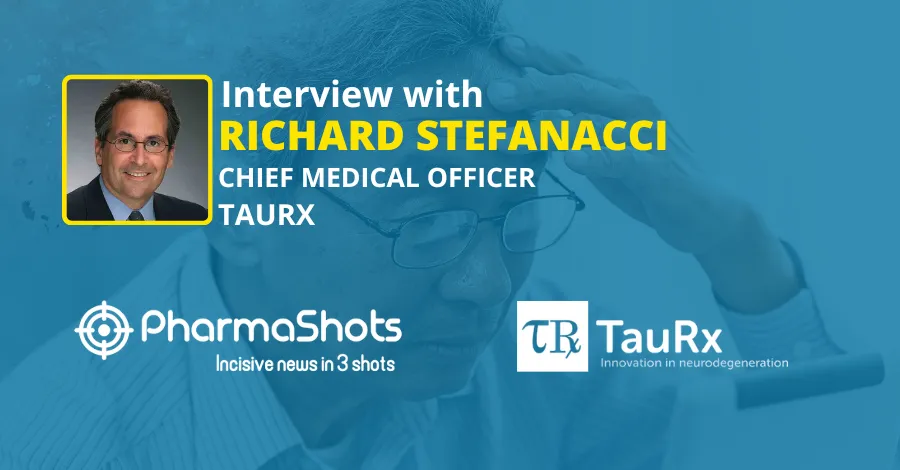
PharmaShots Interview: In Conversation with SOTIO’s CMO, Richard Sachse, Where he Shares Insights on New Interim Data presented in an Oral Presentation at AACR 2022 Annual Meeting
Shots:
- Richard spoke about the results from the Phase 1 AURELIO-03 study of IL-15 superagonist
- Richard also emphasized the clinical benefits of the IL-15 superagonist when combined with pembrolizumab
- The interview gives a profound understanding of the existing & developing cancer therapies as treatment options for solid tumors
Smriti: Explain the details (MOA, ROA, formulations, etc.) of SOT101
Richard: SOT101 is a subcutaneously administered IL-15 superagonist that is fused to the sushi+ domain of the IL-15 alpha receptor chain. It is designed to selectively bind only to IL-2/IL-15 receptors found on cytotoxic T cells and NK Cells, acting as a potent immunomodulator of these cells with limited adverse events. As a subcutaneous injection, SOT101 has the potential for future self-administration.
Smriti: Please tell us about the study design of the P-I/Ib (AURELIO-03) clinical trial
Richard: The AURELIO-03 study is an open-label, single-arm, multicenter clinical trial investigating the safety, PK, PD, and preliminary efficacy of increasing doses of SOT101 alone or in combination with pembrolizumab in patients with advanced solid tumors. In addition, efficacy in selected indications of SOT101 monotherapy at the recommended Phase 2 dose will be explored.
Smriti: What outcomes did the P-I/Ib (AURELIO-03) clinical trial show?
Richard: The interim data from our Phase 1/1b AURELIO-03 clinical trial, presented at this year’s AACR Annual Meeting, demonstrated efficacious data. Clinical benefit was observed in 12 out of 16 patients with at least one post-baseline tumor assessment, even in immune-checkpoint blocker relapsed or refractory tumors. Additionally, trial investigators have observed four partial responses with the longest duration of more than 33 weeks, five instances of stable disease lasting up to over 40 weeks and a confirmed complete response in a patient with mesothelioma. This trial also established the recommended Phase 2 dose of SOT101 in combination with pembrolizumab, being defined at 12 μg/kg, which is the same as for SOT101 monotherapy treatment. The combination of SOT101 with pembrolizumab will be further evaluated in phase 2 AURELIO-04 trial in six distinct tumor indications, which is expected to start this year.
Smriti: Shed some light on the company’s collaboration with Merck and the reason to choose Pembrolizumab in combination therapy with SOT101
Richard: The clinical collaboration with Merck and the use of Pembrolizumab (Keytruda) is justified based on Keytruda’s broad clinical efficacy profile. Keytruda is approved in a broad range of indications and demonstrated the ability to complement many other therapeutics in the immuno-oncologic space. Under the terms of the agreement, SOTIO will be conducting a Phase 2 open-label, multicenter study of SOT101 in combination with Pembrolizumab to evaluate efficacy and safety in patients with selected solid tumors. Merck will be supplying pembrolizumab for the study.
Smriti: How does SOT101 stand its way out from the other existing & developing products for metastatic tumors as many treatment options are being developed for the same indication?
Richard: SOT101 has been specifically designed to bind with high affinity and selectivity only to the IL2/IL15 beta gamma receptors found on cytotoxic T cells and NK cells while avoiding other cell types associated with adverse effects. SOT101 mimics the trans-presentation of the IL15 to its beta-gamma receptor. As a consequence of the binding, the innate immune system will be quickly and potently activated increasing interferon-gamma secretion in the tumor microenvironment. Clinically, NK and CD8 T cells are significantly stimulated, whereas no activation of Tregs was shown. The absence of binding to the IL-2R alpha beta gamma eliminates unwanted effects on regulatory T cells and on endothelial cells. The other important design aspect is that the molecule was designed to show a relatively short half-life. This results in a pulsatory stimulation of NK and T cells rather than a tonic stimulation, thus preventing exhaustion. This is clinically demonstrated by similar stimulation of NK cells and T cells in each administration cycle.
In the Aurelio-03 dose escalation trial SOT101 alone or in combination with pembrolizumab has demonstrated encouraging efficacy signals. Several cases of complete response, partial response or stable disease have been observed in checkpoint-inhibitor resistant and in checkpoint-inhibitor naïve patients with various advanced solid tumors.
Smriti: Please give our readers some more insight on SOT201 & BOXR1030 CAR-T cancer therapy
Richard:
a) BOXR1030 is a next-generation CAR T cell therapy targeting GPC3-expressing tumors. The functionality of engineered T cells is improved by co-expression of the GOT2 transgene, a critical enzyme involved in cellular metabolism. This co-expression with tumor-targeting receptors is expected to overcome resistance and improve the function of T cells in the solid tumor microenvironment. BOXR 1030 has been tested in preclinical studies simulating the solid tumor microenvironment. In such in vitro studies, BOXR1030 T cells resisted suppressive tumor microenvironment-like conditions and improved T cell proliferation under both hypoxic and low glucose conditions compared with standard CAR-T cells.
The results from In vivo studies have demonstrated that BOXR1030 has superior activity compared to standard CAR-T cells with treated animals achieving complete tumor regression. BOXR1030 cells were shown to be more resistant to dysfunction with fewer markers of exhaustion compared to the control CAR-T cells in tumor-infiltrating lymphocytes isolated from the tumors of treated animals. These In vivo models were intentionally designed to be stringent, mimicking the minimal efficacy of standard CAR-T therapies today.
BOXR1030 is expected to enter the clinic this year. Initial indications include patients with hepatocellular carcinoma, squamous cell carcinoma of the lung, and cervical cancer.
b) SOT201 (Please see answer 7)
Smriti: What other products are being developed in your pipeline under IL-15 superagonist-based programs?
Richard: SOT201 is a unique immunocytokine fusing our proprietary L-15 superagonist with an anti-PD-1 antibody. This fusion allows for spatial colocalization of an IL-15 superagonist with an anti-PD-1 checkpoint inhibitorenhancing their synergistic modes of action and potentially improving outcomes. Thus far, preclinical data indicate that SOT201 administration may address other indications in addition to the combination treatment with SOT101 and an anti-PD-1 antibody based on a different mode of action. SOT201 is one of the first IL-15/PD-1 targeting immunocytokines.
Source: Canva
About Author:

Richard Sachse is the Chief Medical Officer at SOTIO. He has more than 25 years of experience as a physician and scientist. He also has extensive expertise in pharmaceutical development and in the design and implementation of translational programs to bridge research programs to the clinic. Richard holds a degree in medicine from the Friedrich-Alexander-University Erlangen, Germany, and a board certification in Clinical Pharmacology

Senior Editor at PharmaShots. She is curious and very passionate about recent updates and developments in the life sciences industry. She covers Biopharma, MedTech, and Digital health segments along with different reports at PharmaShots.













